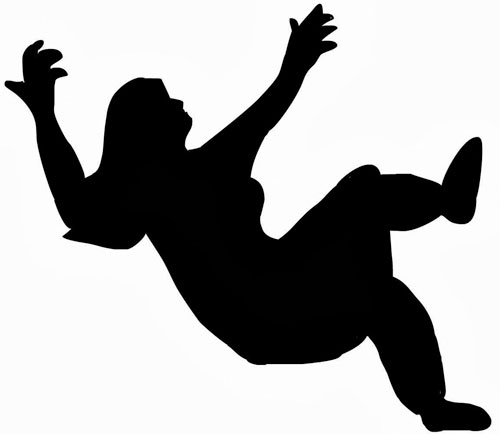.jpg)
With the icy winter months upon us, now is the time to address the risk factors of falls affecting us and our loved ones. The topic of falls affects us all. It can happen to you, a family member, neighbor or friend. Statistically, about 33% of people over the age of 65, and 50% of those over the age of 80, will sustain a fall at least once this year. Many falls result in injuries, including hip fractures. Falls can lead to devastating consequences. Every hour someone has a death associated with a fall.
The long term effects of a fall are: fear of another fall, impaired mobility, decline in function, dependence on others and a sequence of injuries.
Many falls are due to balance impairments. Good balance is a result of correct feedback from your visual, somatosensory and vestibular systems working together within your body along with proper use of this information from the brain and the correct response from your muscles. Your vision relays important information to your brain about your environment, such as where your body is in space. For example, if you stand without support and close your eyes, your body begins to sway because your visual system is compromised. This explains why those with vision impairments are at greater risk for falls, especially in the dark. The somatosensory system provides special sensors in your body which are sensitive to touch, pressure, vibration and stretch in your skin, muscles, tendons and joints, which let your brain know how your body is positioned. The vestibular system consists of sensitive organs in the ear that tells the brain about the movement and position of your head. A disruption in any of these systems can lead to a balance impairment. As we age these systems tend to become compromised, resulting in a greater risk for falls.
There are many factors that can make one at risk for a fall.
• History of previous falls.
• Age—the older, the greater the risk.
• Leg muscle weakness.
• Difficulty with balance.
• Gait impairments.
• Vision problems (cataracts, macular degeneration, wearing bifocals).
• Medical conditions, such as Parkinson’s disease, stroke and diabetes with neuropathies.
• Dementia and Alzheimer’s disease.
• Depression.
• Taking more than four medications at the same time, or psychoactive medications (such as sedatives and anti-depressants).
• Using a cane or other assistive device for walking.
• Home hazards (throw rugs, pets and clutter).
• Low blood pressure.
• Dizziness, vertigo.
• Inappropriate footwear.
A physical therapist can be helpful by initially conducting a brief screening of your risk for a fall. If the screening confirms a risk for falls, the therapist will then perform a thorough evaluation including a review of your medical history; a review of your medications; a simple vision test; an assessment of your feet and footwear; measurement of your vital signs; heart rate and blood pressure monitoring while you change positions, for example, while you move from lying flat to a sitting position; assessment of any nervous system disorders, such as stroke or Parkinson’s disease, assessment of muscle strength and flexibility of both lower extremities including your ankles; special tests to assess your balance, such as standing on one leg unsupported (don’t try this alone); as well as tests to measure how quickly it takes you to rise from a chair; how quickly and steadily you walk, and whether you are able to perform more than one task at the same time, such as talking while walking.
After reviewing the results of the assessment, your physical therapist will design an exercise program to improve your gait, balance, strength and coordination. If necessary, your therapist will recommend an appropriate assistive device for safe ambulation. Referrals to other medical professionals to review your medications and to check for visual and neurological impairments may be recommended as well.
Education about home safety/falls prevention is an integral part of the physical therapy sessions. Some therapists will conduct a home visit to assess the safety of the home environment and make recommendations. Some examples include installation of lighting to prevent falls in the dark; grab bars in the bathroom; handrails for stairs and in hallways, and removal of loose wires, throw rugs and clutter. For those who are at a high risk for falls, hipsters (hip protectors) are often recommended. These are special shorts /briefs worn under clothing that are padded in the hip area and have been shown to decrease the incidence of hip fractures due to a fall. For those who are confused, unsteady, requiring assistance with mobility, there are special battery operated alarm devices that can be attached to the bed and/or chair to alert the caregiver when the person is attempting to stand up alone. Strategies for safe mobility during the winter months to avoid slipping on icy patches are reinforced as well.
For further information you can contact Renee Fishweicher PT DPT MS at: elitecare_optonline.net. Renee is the owner and director of Elite Care Physical Therapy Rehab. P.C., an outpatient physical therapy facility.
By Renee Fishweicher










